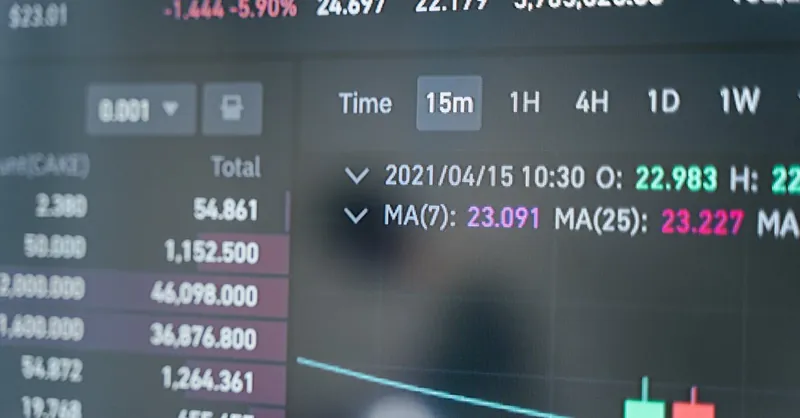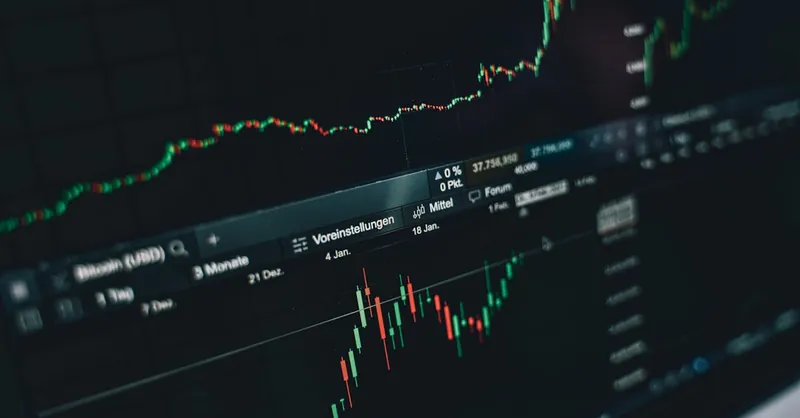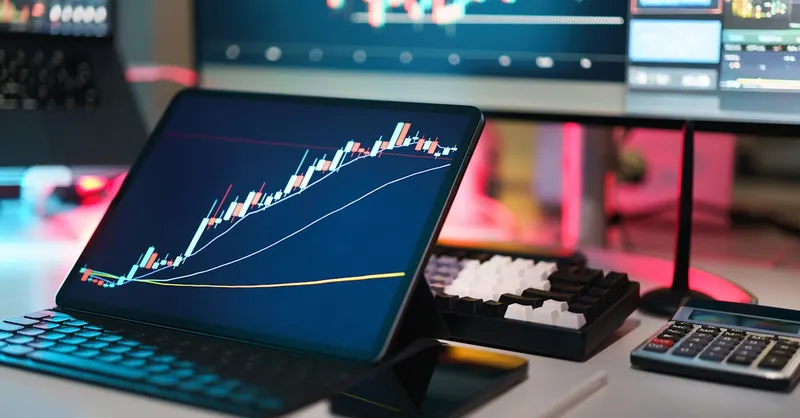Beginners Guide to Crypto Trading Strategies
Category: Cryptocurrency
Start Smart: Your Beginners Guide to Crypto Trading Strategies
Diving into crypto trading can feel like stepping into a whirlwind of information, jargon, and fast-moving markets. Whether you're a curious enthusiast or a cautious investor looking to grow your digital assets, understanding trading strategies is key to navigating this dynamic space successfully. Chances are, you landed here looking for clear, actionable guidance to help you avoid costly mistakes and boost your confidence in trading Bitcoin, altcoins, and more. This guide is crafted just for you — the beginner eager to decode the complexities of crypto markets with approachable, structured insights that build your skill set step-by-step. We go beyond mere definitions to share practical strategies, risk management tips, and market analysis fundamentals that set you up for steady progress. Unlike generic articles, this post walks you through essential crypto trading methods tailored for all experience levels, helping you understand when and how to act, all while addressing the common pain points of uncertainty and overwhelm. Ready to turn your curiosity into smart trades? Let’s explore the strategies that can transform your crypto journey from guessing game to informed decision-making.
- Start Smart: Your Beginners Guide to Crypto Trading Strategies
- Understanding Cryptocurrency Markets
- Fundamental vs Technical Analysis
- Common Crypto Trading Strategies
- Setting Up Your Trading Plan
- Risk Management Essentials
- Using Tools and Resources to Enhance Your Crypto Trading
- Psychology of Trading: Mastering the Mindset for Crypto Success
- Avoiding Common Beginner Mistakes in Crypto Trading
- Tracking Performance and Continuous Learning
Understanding Cryptocurrency Markets
Navigating the world of cryptocurrency markets begins with understanding how they operate and what makes them uniquely volatile compared to traditional financial markets. Unlike stocks or forex, crypto markets run 24/7 with no centralized exchange, meaning trading happens worldwide across multiple platforms at any time of day. This constant activity contributes to the characteristic market volatility, which can translate to significant price swings within minutes or hours—an opportunity and a risk for traders alike.
Key Terminology Every Beginner Should Know
Before placing your first trade, familiarize yourself with essential crypto trading terms:
- Market Order - Buying or selling immediately at the current price.
- Limit Order - Setting a specific price at which you want to buy or sell.
- Liquidity - The ease with which an asset can be bought or sold without impacting its price.
- Bid and Ask - The highest price a buyer is willing to pay (bid) and the lowest price a seller will accept (ask).
- Spread - The difference between bid and ask prices, indicating market efficiency.
- Altcoins - Any cryptocurrency other than Bitcoin, like Ethereum or Litecoin.
- FOMO (Fear of Missing Out) - Emotional trading driven by market hype.
- HODL - Originally a typo for “hold,” now meaning to keep an asset despite market fluctuations.
Choosing Beginner-Friendly Trading Platforms
Selecting the right crypto trading platform is crucial for beginners to ensure a smooth and secure trading experience. Look for platforms that offer:
- User-friendly interfaces with easy navigation.
- Educational resources tailored for new traders.
- Robust security features such as two-factor authentication.
- Demo accounts or practice modes to test strategies risk-free.
- Support for popular cryptocurrencies including Bitcoin and top altcoins.
- Transparent fee structures to avoid unexpected costs.
Popular beginner-friendly platforms include Coinbase, Binance, and Kraken, which combine strong liquidity with accessible tools for novices. Starting on these exchanges helps you focus on learning market mechanics without getting bogged down by complex features designed for advanced users.
By grounding yourself in the framework of how crypto markets function, mastering the language of trading, and choosing the right platform, you're setting a solid foundation to build effective trading strategies that can handle the fast-paced nature of crypto investing.

Image courtesy of Tima Miroshnichenko
Fundamental vs Technical Analysis
Understanding how to evaluate cryptocurrencies is crucial in forming effective trading strategies, and this often boils down to two primary approaches: Fundamental Analysis and Technical Analysis. Each method offers unique insights and tools to help traders make informed decisions in the volatile crypto market.
Fundamental Analysis: Assessing the True Value
Fundamental Analysis focuses on the intrinsic value of a cryptocurrency by examining factors that might influence its long-term viability and growth potential. For beginners, this means going beyond price charts to study elements such as:
- Project Purpose and Technology – Understanding what problem the coin solves and how innovative its blockchain technology is.
- Development Team and Community Support – Strong teams and active communities often signal healthier projects.
- Partnerships and Adoption – Real-world use cases, collaborations, and growing adoption can drive demand.
- Tokenomics – The supply model, distribution mechanism, and incentives embedded in the crypto’s ecosystem.
- Regulatory Environment – How legal frameworks and governmental stances may impact the asset’s future.
By tracking news, whitepapers, and updates from official channels, traders gain a qualitative perspective to predict potential price movements backed by real-world factors rather than speculation.
Technical Analysis: Reading the Market’s Pulse
In contrast, Technical Analysis relies solely on historical price data and trading volumes to identify patterns and trends that might predict future price behavior. This approach is popular among day traders and swing traders looking to capitalize on short-term market movements.
Basic tools and indicators for beginners include:
- Candlestick Charts – Visualizing price data with open, close, high, and low points for specific time intervals.
- Moving Averages (MA) – Highlighting average prices over time to spot trend directions.
- Relative Strength Index (RSI) – Measuring overbought or oversold conditions to anticipate price reversals.
- Support and Resistance Levels – Price points where cryptocurrencies tend to stop falling or rising, signaling potential entry or exit points.
- Volume Analysis – Understanding the strength behind price moves through trading volume.
Combining these indicators helps traders construct actionable signals, enabling timely buys or sells in the fast-moving crypto markets.
Which Should Beginners Use?
While both analysis methods are valuable, beginners often benefit from starting with Fundamental Analysis to build a solid understanding of the projects they trade. Over time, incorporating Technical Analysis will enhance the ability to time trades effectively, making these approaches complementary parts of a well-rounded crypto trading strategy.
Mastering the basics of both fundamental and technical analysis equips new traders with the knowledge to evaluate cryptocurrencies thoughtfully and trade confidently, reducing reliance on guesswork and emotional decisions.

Image courtesy of Alesia Kozik
Common Crypto Trading Strategies
Diving into crypto trading without a strategy is like sailing without a compass. To help beginners navigate the volatile market confidently, let’s break down some of the most popular and beginner-friendly crypto trading strategies you can start using today. These strategies balance simplicity with effectiveness, making them ideal for building your skills and minimizing risk.
1. HODLing: The Long-Term Buy and Hold
HODLing is arguably the simplest and most popular strategy among crypto beginners and veterans alike. The term, originating from a community typo for “hold,” now lovingly refers to buying cryptocurrencies like Bitcoin or Ethereum and holding them through market ups and downs. This strategy bets on long-term growth, ignoring short-term volatility.
- Best suited for investors who believe in the long-term potential of crypto.
- Requires patience and strong emotional discipline to resist selling during dips.
- Avoids frequent trading fees and timing risks.
HODLing is a low-maintenance strategy ideal for newcomers who want exposure without needing to monitor the markets constantly.
2. Day Trading: Capitalizing on Intraday Moves
Day trading involves making multiple trades within a single day to profit from small price movements. It demands quick decision-making and close monitoring of market trends, often using technical analysis tools like candlestick patterns and momentum indicators.
- Requires a good understanding of price charts and fast execution.
- Best suited for traders who can dedicate time to watch the markets during trading hours.
- Comes with higher risk due to volatile intraday price swings.
Though challenging, day trading offers the potential for rapid gains for those who develop strong analytical skills and discipline.
3. Swing Trading: Riding Medium-Term Trends
Swing trading focuses on capturing gains from price “swings” over days or weeks. Unlike day trading, it allows more time for research and analysis, often combining both fundamental and technical analysis to identify ideal entry and exit points.
- Balances trading frequency and risk exposure.
- Suitable for those who want active involvement without the pressure of intraday trading.
- Leverages trend-following indicators to spot momentum shifts.
Swing trading is an excellent strategy for beginners ready to move beyond HODLing but not quite prepared for day trading intensity.
4. Dollar-Cost Averaging (DCA): Reducing Timing Risk
Dollar-cost averaging is a disciplined strategy where you invest a fixed amount of money regularly, regardless of the cryptocurrency’s price. This method smooths out the effects of volatility and reduces the risk of making a large investment at a market peak.
- Encourages consistent investment habits and reduces emotional decision-making.
- Helps beginners build positions gradually, lowering entry risk.
- Particularly effective in volatile markets typical of cryptocurrencies.
By focusing on regular contributions rather than timing the market, DCA supports steady portfolio growth and mitigates the stress of price fluctuations.
Adopting one or combining several of these tried-and-true crypto trading strategies can empower you to approach the markets methodically, rather than reactively. Remember, the best strategy aligns with your personal goals, risk tolerance, and time availability, so take your time experimenting with each before committing fully. Equipped with these strategies, you’re well-positioned to move forward with confidence in your crypto trading journey.

Image courtesy of RDNE Stock project
Setting Up Your Trading Plan
To trade cryptocurrency successfully, having a well-defined trading plan is essential. Your plan acts as a roadmap, helping you stay disciplined and focused amid the market’s fast pace and volatility. It starts with clear goal setting, choosing a trading style that fits your lifestyle, defining risk tolerance, and establishing precise entry and exit rules.
Define Your Trading Goals
Begin by outlining what you want to achieve with crypto trading. Are you aiming for steady long-term portfolio growth, quick profits from daily trades, or learning market dynamics without risking large sums? Clarifying your goals will help determine the strategies and tools best suited for you. For example:
- Capital Growth – Focus on accumulating assets via strategies like HODLing or dollar-cost averaging.
- Income Generation – Seek regular profits through day trading or swing trading.
- Learning and Experimentation – Practice trading with small amounts or demo accounts to build skills.
Choose Your Trading Style
Your trading style should reflect your availability, risk appetite, and comfort with market involvement. Common styles include:
- Long-term investing: Low maintenance but requires patience.
- Swing trading: Medium-term, with trades lasting days to weeks.
- Day trading: High-intensity, requiring active daily monitoring.
- Scalping: Very short-term trades made within minutes or hours, demanding quick reflexes.
Selecting the style that fits your personality and schedule increases the chance of adherence and success.
Set Risk Tolerance and Capital Allocation
Managing risk is critical in crypto trading, where market swings can be sudden and severe. Decide upfront how much capital you are willing to risk per trade and overall. Common guidelines suggest risking only 1-2% of your capital per trade to protect your portfolio from major losses.
- Determine a maximum drawdown you can accept without emotional strain.
- Avoid investing money you cannot afford to lose.
- Include stop-loss orders in your plan to limit downside.
Establish Clear Entry and Exit Rules
To reduce emotional decisions, predefine your criteria for entering and exiting trades:
- Entry rules could be based on specific technical indicators, fundamental triggers, or price levels.
- Exit rules dictate when to sell to realize profits or cut losses, such as target price points or trailing stops.
Having clear, objective rules helps prevent chasing pumps or holding losing positions out of hope, which are common beginner pitfalls.
By thoroughly defining these components, your trading plan becomes a powerful tool that guides consistent and rational decision-making, enabling you to navigate the crypto markets with confidence and clarity. Crafting your plan with attention to goals, style, risk, and rules will set the stage for smarter, sustainable trading practices.

Image courtesy of Yan Krukau
Risk Management Essentials
In the volatile world of cryptocurrency trading, effective risk management is not optional – it's essential for long-term success. Without it, even the most promising trades can lead to significant losses, undermining your portfolio and confidence. Managing risk well means protecting your capital, controlling potential losses, and making rational decisions regardless of market swings.
Importance of Managing Risk
Crypto markets are famously unpredictable, with sharp price fluctuations happening within minutes. This volatility creates both opportunities and dangers. By applying risk management strategies, you safeguard your investment against market uncertainty and avoid emotional trading mistakes spurred by fear or greed. Managing risk helps you:
- Preserve capital for future trades and opportunities.
- Limit losses so one bad trade won’t wipe out your entire account.
- Maintain emotional discipline, enabling clearer, more strategic decisions.
- Build sustainable trading habits that support steady portfolio growth.
Setting Stop Losses
A stop loss is a predetermined price level at which you automatically sell a position to prevent further losses. Setting stop losses is one of the simplest yet most powerful tools to manage risk:
- Decide your maximum acceptable loss per trade (often 1-2% of total capital).
- Place stop loss orders accordingly to limit downside if the market moves against you.
- Adjust stops as your trade moves in profit to lock in gains (known as trailing stop).
Using stop losses protects you from catastrophic losses during sudden market dips and takes the emotion out of the decision to exit.
Position Sizing: How Much to Trade
Position sizing refers to determining how large or small each trade should be based on your total trading capital and risk tolerance. Proper position sizing ensures no single trade can dramatically harm your portfolio.
- Base position size on the percentage of your capital you are willing to risk.
- Smaller positions reduce downside risk but may also limit gains.
- Larger positions carry higher risk, which can be dangerous in rapid crypto markets.
A common risk management rule is to risk only 1-2% of your total capital on any single trade, helping you survive inevitable losing streaks and reap consistent profits over time.
Avoid Emotional Decisions
Emotional impulses like FOMO (Fear of Missing Out) or panic selling can destroy a carefully crafted trading plan. Staying disciplined and sticking to your pre-set rules is vital:
- Track trades and review performance objectively without letting recent wins or losses influence your next move.
- Avoid chasing impulsive market hype or rumors.
- Use your trading plan as a guide to make decisions based on logic, not emotions.
Strong risk management creates a mindset where patience, consistency, and discipline prevail over anxiety or greed, enabling steady success in crypto trading.
Mastering these risk management essentials—setting stop losses, sizing positions thoughtfully, and avoiding emotional traps—not only protects your capital but also builds the foundation for confident, intelligent crypto trading. Integrate these practices into your trading plan to navigate the unpredictable crypto markets with control and resilience.

Image courtesy of RDNE Stock project
Using Tools and Resources to Enhance Your Crypto Trading
To navigate the fast-paced cryptocurrency market effectively, leveraging the right trading tools and resources is indispensable for beginners. These tools not only simplify complex market data but also help you execute strategies with greater precision and confidence. From intuitive charting software and automated trading bots to comprehensive educational platforms, tapping into these resources accelerates your learning curve and smart trading decisions.
Essential Trading Tools for Beginners
-
Charting Software
Robust charting platforms like TradingView and built-in exchange tools allow you to visualize price movements, identify trends, and apply technical indicators such as moving averages and RSI. These tools enable you to perform detailed technical analysis, which is critical for timing your entries and exits accurately. -
Crypto Trading Bots
Automated trading bots like 3Commas and Cryptohopper execute trades based on predefined strategies, helping beginners reduce emotional trading errors and consistency challenges. Bots can handle repetitive tasks such as dollar-cost averaging or simple trend-following strategies, allowing you to trade 24/7 in a volatile market. -
Portfolio Trackers
Apps such as Blockfolio and CoinTracker provide real-time monitoring of your crypto holdings across multiple exchanges. Staying on top of your portfolio’s performance helps you manage risk better and make timely adjustments to your trading plan.
Educational Resources to Boost Your Trading IQ
Understanding market dynamics and honing your trading skills require continuous learning. Leverage free and paid educational resources designed for crypto beginners:
- Online Courses: Platforms like Udemy, Coursera, and specialized crypto academies offer structured courses on blockchain, crypto trading, and technical analysis.
- Community Forums and Social Media: Engage with communities on Reddit, Twitter, and Telegram to gain insights, market updates, and warnings about scams or pump-and-dump schemes.
- News Aggregators: Use sites like CoinDesk, CryptoSlate, and Cointelegraph for real-time news that can influence market sentiment and fundamental analysis.
- Backtesting Tools: Experiment with historical data to test your strategies without risking real capital, available on platforms like TradingView or dedicated crypto strategy simulators.
By integrating these tools and resources into your trading routine, you empower yourself to make data-driven decisions, automate routine tasks, and stay informed about market movements. This fusion of technology and education forms the backbone of modern crypto trading success, especially for beginners aiming to evolve into confident, strategic traders.

Image courtesy of Jakub Zerdzicki
Psychology of Trading: Mastering the Mindset for Crypto Success
One of the most overlooked yet critical aspects of successful crypto trading is the psychology behind trading decisions. In an asset class known for high volatility and rapid news cycles, managing your emotions, maintaining discipline, and cultivating the right mindset are just as important as technical skills or fundamental knowledge. Without psychological preparedness, even the best strategies can crumble under stress, leading to impulsive trades or costly mistakes.
Managing Emotions: Fear and Greed in Crypto Trading
The crypto market’s wild swings often trigger intense emotional reactions such as fear and greed, which can distort rational decision-making:
- Fear may cause premature selling during dips or hesitation to enter promising trades.
- Greed can push traders to chase hype, ignore risks, or hold losing positions too long hoping for a rebound.
Awareness of these emotional triggers is the first step. Successful traders learn to recognize these feelings and implement strategies to respond calmly, such as using stop losses and sticking strictly to their trading plan.
Discipline: The Backbone of Consistent Trading
Discipline means consistently following your predefined trading rules regardless of market noise or sudden price movements. This includes:
- Adhering to your entry and exit criteria without deviation.
- Respecting risk management measures, like stop losses and position sizing.
- Avoiding impulsive decisions driven by short-term market hype or FOMO.
- Reviewing trades impartially to learn from mistakes rather than shifting blame.
Building discipline takes time and conscious effort but translates directly into sustainable profitability and stress reduction.
Cultivating the Right Mindset for Long-Term Growth
A winning crypto trader mindset balances realism with optimism:
- Embrace patience — understand that losses and drawdowns are part of the journey.
- Practice resilience by learning from setbacks instead of getting discouraged.
- Focus on continuous education and improvement rather than quick wins.
- Maintain a growth mindset, seeing every trade as an opportunity to refine skills.
By nurturing this mindset, beginner traders can stay grounded during volatility, make objective decisions, and steadily build confidence and competence.
Ultimately, mastering the psychology of crypto trading equips you to harness the power of your strategies without falling victim to emotional pitfalls. Developing emotional control, strict discipline, and a long-term perspective is essential for converting beginner enthusiasm into enduring trading success in the unpredictable crypto markets.

Image courtesy of Tima Miroshnichenko
Avoiding Common Beginner Mistakes in Crypto Trading
Starting your crypto trading journey is exciting, but it’s essential to learn from the common pitfalls that many beginners face. Avoiding these frequent mistakes not only preserves your capital but also builds the foundation for disciplined and profitable trading.
Overtrading: The Hidden Danger
One of the biggest rookie errors is overtrading—making too many trades in a short period, often driven by impatience or the desire to capitalize on every market movement. This can lead to high transaction fees, increased exposure to market noise, and emotional exhaustion.
- Resist the urge to trade excessively; prioritize quality trades based on solid analysis.
- Stick to your trading plan and predefined strategy rather than reacting impulsively to every price swing.
Lack of Research: Trading Without a Map
Jumping into trades without thorough fundamental or technical research is a recipe for loss. Beginners sometimes follow tips blindly or chase hype without validating information, which can result in buying overvalued coins or entering scams.
- Always conduct your due diligence by studying project fundamentals, reading whitepapers, and analyzing market trends before investing.
- Use trusted sources and verified data to avoid misinformation.
Chasing Pumps: Avoid the FOMO Trap
The crypto world is notorious for sudden price surges, or "pumps," that attract inexperienced traders hoping for quick profits. Chasing these pumps often leads to buying at inflated prices right before a crash.
- Remain patient and avoid buying into hype-driven rallies without solid backing.
- Set entry points based on analysis rather than emotions to avoid costly timing mistakes.
Steering Clear of Scams and Frauds
Crypto’s decentralized and largely unregulated space unfortunately attracts numerous scams. From fake initial coin offerings (ICOs) to Ponzi schemes, beginners are particularly vulnerable.
- Verify the legitimacy of projects and exchanges before committing funds.
- Be skeptical of promises of guaranteed returns or “too good to be true” deals.
- Use community reviews, official social media channels, and scam watchlists to stay informed.
By proactively addressing these common beginner mistakes—overtrading, insufficient research, chasing pumps, and falling for scams—you set yourself up for a safer and more successful crypto trading experience. Cultivating a patient, informed, and cautious approach will help you build lasting confidence and resilience in the ever-evolving digital asset markets.

Image courtesy of Tima Miroshnichenko
Tracking Performance and Continuous Learning
Successful crypto trading doesn’t stop at placing trades—it requires ongoing performance tracking, thoughtful trade analysis, and staying updated with the latest market news and evolving strategies. Monitoring your trades systematically helps you identify what works and what doesn’t, while continuous learning keeps your skills sharp in the ever-changing crypto landscape.
How to Monitor and Analyze Your Trades
Keeping detailed records of every trade, including entry and exit points, position size, strategy used, and the outcome, is essential for growth as a trader. Use a trading journal—digital spreadsheets or specialized apps—to log:
- Trade Date and Time
- Cryptocurrency and Market Conditions
- Trade Strategy and Rationale
- Entry Price, Exit Price, and Position Size
- Profit or Loss and Percentage Change
- Mistakes or Successes Noted for Future Reference
After accumulating trades, conduct regular reviews to:
- Identify patterns in your wins and losses.
- Pinpoint which strategies yield consistent profits.
- Detect emotional or impulsive trades to avoid.
- Adjust your trading plan based on data-driven insights.
Staying Informed: The Importance of Market News and Evolving Strategies
Crypto markets react quickly to news, regulatory updates, technological breakthroughs, and market sentiment shifts. To remain competitive, commit to continuous learning by:
- Following trusted crypto news outlets like CoinDesk, CoinTelegraph, and CryptoSlate.
- Subscribing to newsletters and alerts focused on Bitcoin, altcoins, and blockchain innovations.
- Participating in online forums, webinars, and community discussions to exchange ideas and hear diverse perspectives.
- Regularly refreshing your understanding of technical indicators and testing new strategies in demo environments or with small capital.
By combining meticulous performance tracking with active engagement in market education, you cultivate the adaptive mindset necessary for sustained success in crypto trading. This ongoing process turns every trade—win or loss—into a stepping stone for becoming a more skilled and confident trader.
Image courtesy of Tima Miroshnichenko
